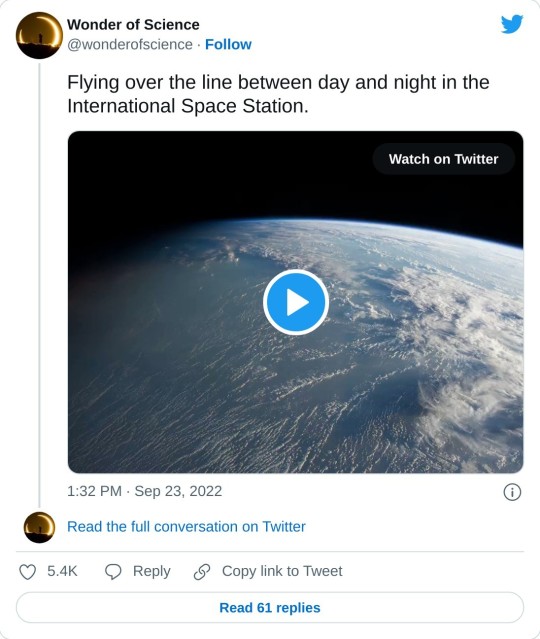#low Earth orbit
Note
How did you choose your Flight Director name?
#FlightDirectorAT#answertime#horizon#spaceflight#perseverance#hope#names#lion#teamwork#low Earth orbit
2K notes
·
View notes
Text

Stepping out on the front porch. Astronaut David Scott opens the hatch to check out the view during Apollo 9, March 1969. In this pic taken by fellow astronaut Rusty Schweickart, ‘Gumdrop’, the Command Service Module is docked with ‘Spider’, the Lunar Module. A9 was the 1st flight incorporating all Apollo spacecraft components. The 10 day mission was the 2nd launched by a Saturn V rocket.
#apollo 9#spacecraft#command module#low earth orbit#astronaut#space travel#1969#earth orbit#astronauts#space exploration#vintage space#space#space age#nasa#moon landing#space race#spaceflight#nasa astronauts#nasa photos#space history#spacesuits#1960s
363 notes
·
View notes
Text

2001-2002 India-Pakistan standoff
#2001-2002 india-pakistan standoff#india-pakistan standoff#military standoff#political standoff#wikipedia#wikipedia pictures#standoff#india#pakistan#low earth orbit#iss photography#international space station#indus river valley#karachi
15 notes
·
View notes
Text
1 note
·
View note
Text
LEO Satellites - How do they stay in orbit ?
On a clear evening what appears as a slowly moving trail of light could be starlink satellites. You might wonder who turned the lights on in them ?
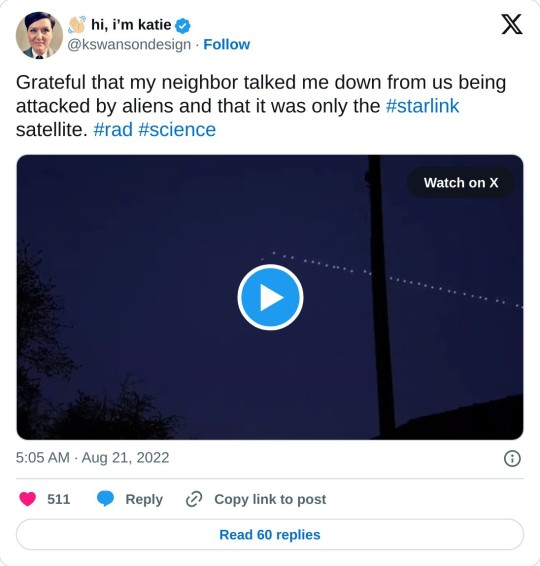
These are starlink satellites that are placed in the Low Earth Orbit - around 200-800 Km from the earth's surface. This is very close to earth for an orbiting satellite. In fact the gravity experienced by these satellites would be almost the same as the gravity experienced at earth's surface.
To understand how they manage to be in orbit, let us to do a thought experiment. Say you throw a stone across a pond. the higher the force that you impart on it, the longer the distance it travels. Now imagine that you manage to impart a force so strong, that it travels the entire earth and comes around to hit you on the head. Well, that is what is happening with these satellites at around 200km above the earth's surface.

There are two major forces that are acting on such a rock that is orbiting around the earth - the gravity and the centrifugal force. While the gravity tries to pull the rock towards the earth the centrifugal force acts on the opposite direction counteracting it.
To understand centrifugal force, let us go back to the childhood play thing of the spinning disk and a post or a devil's wheel of Oktober fest.
youtube
The centrifugal force is the force that is pushing you outward from the spinning disk. The farther from the center, the bigger the force. The centrifugal force can also be increased by increasing the velocity. Thus, for an object to be at orbit without falling, it has to be as far as possible from the earth's surface, and/or have a higher velocity while revolving around the earth.
For an object to be in LEO, it must be travelling at around 7.8 km/s depending on the altitude. And these satellites revolve around the earth around 12-16 times a day, depending on the altitude.
Unlike geo-synchronous (GEO) satellites that are at an altitude of 36000 Kms and are stationary with respect to earth, these satellites move with respect to earth. Hence they need lots of satellites to cover the entire earth and they could need base stations to hand over signals. They also suffer from doppler, which must be corrected as well.
Though the air is less dense at 200km, LEO satellites still face significant air resistance, and they lose their altitude. To correct this they use rockets to boost their altitude three to four times a year. They are powered by solar energy with battery backup.
The International Space Station is also at a Low Earth Orbit, enabling faster and cheaper travel between the space station and the earth. Since the centripetal force and the gravity are equalized, the astronauts at the space station feel weightlessness or zero gravity.

The Starlink satellites reflect the sun, and hence they appear to shine, sparkle and shimmer!
0 notes
Text
The Largest Satellites of Earth 🛰

What's that near the Moon? It' the International Space Station (ISS). Although the ISS may appear to be physically near the Moon, it is not ? it is physically near the Earth. In low Earth orbit and circulating around our big blue marble about every 90 minutes, the ISS was captured photographically as it crossed nearly in front of the Moon. The Moon, itself in a month-long orbit around the Earth, shows a crescent phase as only a curving sliver of its Sun-illuminated half is visible from the Earth. The featured image was taken in late March from Shanghai, China and shows not only details of Earth's largest human-made satellite, but details of the cratered and barren surface of Earth's largest natural satellite. Over the next few years, humanity is planning to send more people and machines to the Moon than ever before.
Image Credit & Copyright: Tianyao Yang
#2023#your friendly neighborhood space nerd#space#nasa#earth#moon#satellite#iss#international space station#low earth orbit#astronomy
1 note
·
View note
Text
NASA and Rocket Lab to Launch TROPICS Mission to Study Tropical Cyclones with CubeSats
NASA’s TROPICS (Time-Resolved Observations of Precipitation structure and storm Intensity with a Constellation of Smallsats) is a mission to study tropical cyclones, such as Hurricane Ian, pictured here as captured by the MODIS instrument on NASA’s Terra on Sept. 27, 2022.Credits: NASA
NASA and Rocket Lab are set to launch the Time-Resolved Observations of Precipitation structure and storm…
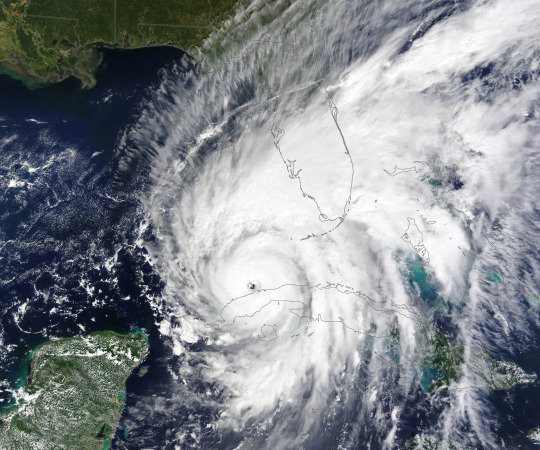
View On WordPress
#CubeSats#Earth System Science#Electron rocket.#launch#low Earth orbit#NASA#Rocket Lab#tropical cyclones#TROPICS#weather tracking
1 note
·
View note
Link
#ISRO launch, Oneweb one network launch, 36 satellites launch
1 note
·
View note
Text
NEW BOYGENIUS EP ON 10/13 HELLO???
22 notes
·
View notes
Text
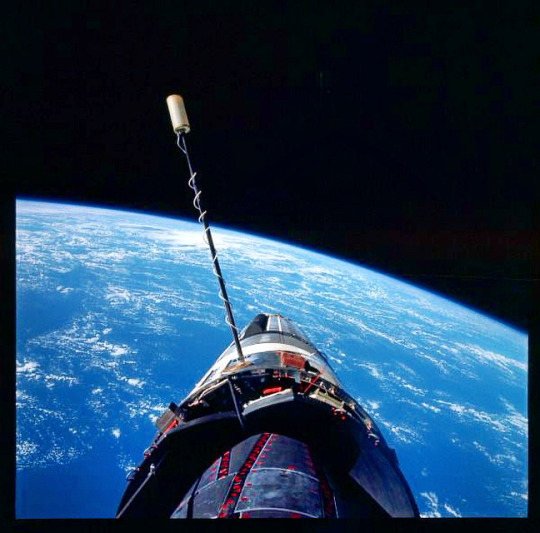
The final Gemini mission. Astronauts James Lovell & Buzz Aldrin flew Gemini XII; the 10th & final crewed mission on Project Gemini, Nov 1966. The 3-day, 22-hour, 59-orbit mission saw Aldrin perform 3 EVAs totalling 5.5 hours. This accomplishment met a major goal for NASA by demonstrating astronauts could work outside a spacecraft for extended periods of time. It was Buzz’s rookie flight while Lovell had flown on Gemini 7. The backup crew for the mission was Gene Cernan & Gordon Cooper.
#astronauts#gemini 12#nasa#space travel#space exploration#vintage space#astronaut#space race#space age#space#space history#Gemini program#low earth orbit#1966#1960s#nasa photos#space program#buzz aldrin#james lovell#spacecraft
16 notes
·
View notes
Text
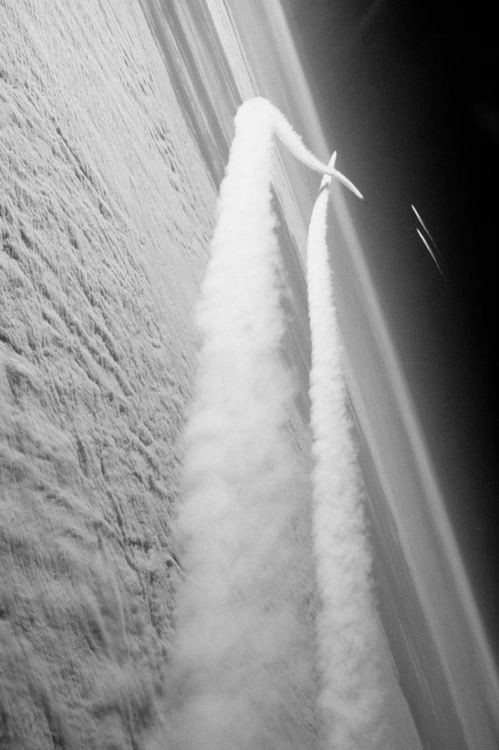
42 notes
·
View notes
Text
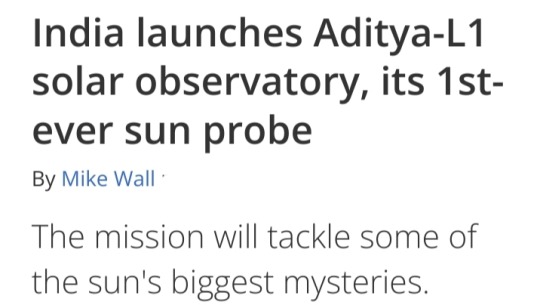
2 September 2022
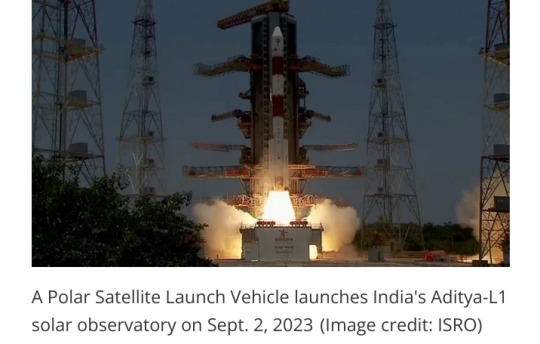
Fresh off its success at the moon, India is now headed for the sun.
The nation launched its first-ever solar observatory today (Sept. 2), sending the Aditya-L1 probe skyward atop a Polar Satellite Launch Vehicle (PSLV) from Satish Dhawan Space Centre at 2:20 a.m. EDT (0620 GMT; 11:50 a.m. local India time).
The PSLV deployed Aditya-L1 into low Earth orbit (LEO) as planned about 63 minutes after liftoff, sparking applause and high fives in mission control.
"Congratulations, India, and congratulations, ISRO [the Indian Space Research Organisation]," Jitendra Singh, India's Minister of State for Science and Technology, said shortly after deployment on ISRO's launch webcast.
"While the whole world watched this with bated breath, it is indeed a sunshine moment for India," Singh added.
The successful launch followed on the heels of another big milestone for India: On August 23, its Chandrayaan-3 mission became the first to land softly near the moon's south pole.
Chandrayaan-3's lander-rover duo are expected to conk out in a week or so, when the harsh lunar night falls at their touchdown site. But Aditya-L1's long journey has just begun.
A long road to a good sun-viewing spot
Aditya-L1 won't stay in LEO forever:
After a series of checkouts, it will use its onboard propulsion system to head toward Earth-sun Lagrange Point 1 (L1), a gravitationally stable spot about 1 million miles (1.5 million kilometers) from our planet in the direction of the sun.
That destination explains the latter part of the mission's name. And the first part is simple enough: "Aditya" translates to "sun" in Sanskrit.
The 3,260-pound (1,480 kilograms) observatory will arrive at L1 about four months from now, if all goes according to plan.
But the long trek will be worth it, according to the ISRO.
"A satellite placed in the halo orbit around the L1 point has the major advantage of continuously viewing the sun without any occultation/eclipses," ISRO officials wrote in an Aditya-L1 mission description.
"This will provide a greater advantage of observing the solar activities and its effect on space weather in real time."
Indeed, another sun-studying spacecraft is already at L1 — the Solar and Heliospheric Observatory (SOHO), a joint NASA-European Space Agency mission that launched in December 1995.
(Several other spacecraft, including NASA's James Webb Space Telescope, are at Earth-sun Lagrange Point 2, which is a million miles from Earth, in the direction away from the sun.)

Solar flares, the coronal heating mystery and more
Once it's settled in at L1, the solar probe will use four three science instruments to study the particles and magnetic fields in its immediate surroundings and four others to scrutinize the sun's surface (known as the photosphere) and its atmosphere.
This work will help scientists better understand solar activity, including the dynamics of solar flares and coronal mass ejections (CMEs), ISRO officials say.
Flares are powerful flashes of high-energy radiation, and CMEs are huge eruptions of solar plasma.
Both types of outburst can affect us here on Earth. Intense CMEs that hit our planet, for example, trigger geomagnetic storms that can disrupt satellite navigation and power grids.
(As a side benefit, such storms also supercharge the gorgeous light shows known as auroras.)
Aditya-L1 will also tackle the "coronal heating problem," one of the biggest mysteries in heliophysics.
The corona — the sun's wispy outer atmosphere — is incredibly hot, reaching temperatures around 2 million degrees Fahrenheit (1.1 million degrees Celsius), according to NASA.
That's about 200 times hotter than the solar surface, which is "only" 10,000 degrees F (5,500 degrees C) or so.
It's still unclear what is responsible for this startling and counterintuitive discrepancy.
(Why would it be hotter away from the sun's core, where the energy-producing nuclear fusion reactions are occurring?)
Aditya-L1 has other science goals as well. For instance, the mission also aims to more fully flesh out the solar wind, the stream of charged particles flowing constantly from the sun, ISRO officials said.
Aditya-L1 will measure the composition of the solar wind and attempt to determine how it is accelerated.
And Aditya-L1 will do all this work on the cheap:
The mission's price tag is about 3.8 billion rupees, or $46 million US at current exchange rates.
That's in the same ballpark as Chandrayaan-3
India's first successful moon-landing mission costs about 6.15 billion rupees, or $74 million US.
For comparison, NASA's most recent big-ticket sun mission, the record-setting Parker Solar Probe, costs roughly $1.5 billion.
This disparity should not be viewed as an indictment of NASA, however; labor costs are much higher in the United States than in India, among other differences between the two nations' economies.
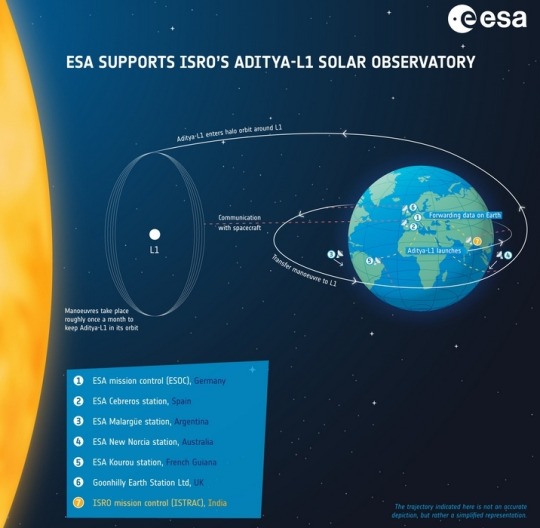
Aditya-L1 is a coronagraphy spacecraft to study the solar atmosphere, designed and developed by the Indian Space Research Organisation (ISRO) and various other Indian research institutes.
#India#Aditya-L1#Polar Satellite Launch Vehicle (PSLV)#Satish Dhawan Space Centre#low Earth orbit (LEO)#sun#Indian Space Research Organisation#Chandrayaan-3#Earth-sun Lagrange Point 1 (L1)#Solar and Heliospheric Observatory (SOHO)#solar flares#coronal mass ejections (CMEs)#coronal heating problem#heliophysics#solar wind#Parker Solar Probe#NASA#solar observatory#solar atmosphere
12 notes
·
View notes
Text

#doom#some of the shit i heard today i think doom violates the outer space treaty of 1967 significantly less#i am playing doom on an illegal weapon of mass destruction in low earth orbit
24 notes
·
View notes
Text
Ch. 26: From on High
Dr. Lamb’s first speech came that afternoon without preparation at all. She had just stepped outside the office to stretch her legs when a shout went up down the street. Down the block came a vanguard of children shouting insults and throwing rocks; just behind the children, a group of overall-clad workmen surrounded by Sinclairs wielding shotguns; far behind marched a shifting, shivering horde of disgruntled humanity. Men, women, children, all ages, in washed-out clothing that flapped loosely on their limbs, sometimes holding brooms or pokers or chair legs.
The rumble was like that of thunder.
Soon the group had swallowed up her street, as well as the line that crushed itself against her building.
“I’m very sorry; what’s going on?” Dr. Lamb called out into the crowd.
“They’re knocking down our apartment!” a man in black called back. “They’re knocking it down and they’re not paying us back for the leases or nothing!”
“Perhaps I can help,” she said, holding her door open for an entering janitor. “When are they going down?”
“This minute! Now!”
She stepped off her stoop. “I will be back directly. All of you will be seen to.”
The line outside her door stared mutely; no doubt they hadn’t heard her.
Some watched, wondering.
She stepped out into the crowd and it swept her down the block. A group of young men blocked up the space around her without saying a word; she was aware of their eyes, although she never caught them looking at her.
She was never jostled. She was never touched.
In this way, she pushed toward the front of the line, where a square opened organically into a bare patch of raw stone and dumped cement. Men with saws and sledgehammers were arguing with a throng of inhabitants clustered outside one of the Drop’s most cherished rarities—a professionally-built building once used as a flophouse for the construction crews of years past, long since converted to a tenement. Its front door had already been removed from its hinges.
Dr. Lamb broke through the head of the throng, lifting her arms and her voice.
“Quiet, please!” she called out.
Perhaps because she was a woman, perhaps because she reminded one strongly of Sunday school teachers, perhaps because she stood out—prim and proper in a pencil skirt down to her calves, a high collar, pale and lavender and gray against the yellow, the black, the earth—the different sides settled.
The Sinclairs alone moved; although they kept the muzzles down, they slowly lifted their shotguns against their shoulders.
“I come unarmed,” said Dr. Lamb to the Sinclairs, “and am but a single woman. Do you mean to solve your problems with violence instead of reason?”
The crowd muttered, but the Sinclairs burst into laughter.
“This ain’t your place, sister,” said the Sinclair captain, who wore a peaked cap with a brass star. “Why don’t you head back and yak at those hobos instead of bothering honest workers?”
“Violence here would no doubt stretch to the place where I ‘yak,’” said Dr. Lamb. “This is purely self-interest. Please, allow me to help.”
The crowd shifted around behind her. Were the edges of it beginning to press inward?
“We don’t need no help,” said the captain. “Get outta here.”
“I am told you are tearing down this building,” said Dr. Lamb. “This would impact well over a hundred citizens. Who has made this decision?”
“Sinclair Solutions,” said a worker whose nametag read, “Mitchell.” “Take it up with them.”
“Sinclair Solutions owns this site?”
“Well, yeah,” Mitchell said. “What don’t they own down here?”
From the side streets swaggered more brown-jackets, rifles in their arms. Dr. Lamb saw them.
Dr. Lamb did not express anything other than unsurprised indifference.
“It seems strange that the company would not give these people notice,” she said.
Mitchell shrugged. “Not uncommon down here, ma’am.”
She blinked and stood back. “I beg your pardon?”
“Not uncommon to build or take down a building without letting anyone know,” he said. “Happens all the time.”
“You would throw whole families on the street. Working families, no less.”
“Just doing my job, ma’am.”
Brown-jackets were slipping through the crowd toward her.
Dr. Lamb lifted her voice. “Part of our ‘job’ is understanding and defending the philosophy. And by the philosophy, this is the behavior of a tyrant.”
Silence fell on the square. A brown-jacket had just begun to reach for her out of the crowd. He recoiled.
“This is the behavior of a tyrant!” she said, a woman—a schoolmarm—shining white. “You have every right to defend yourselves.”
The acoustics of the square had been accidental; now they flung up Dr. Lamb’s voice like an end-time trumpet. The crowd had been building up as she spoke. It trembled, edged forward. Too late did the brownjacks and the sledgehammers realize that it was perhaps 300 strong and still growing.
The captain’s jaw tightened. “All right. You had your chat. We’ve got work to do. You get your scum out of the way so we can get it done.”
But Dr. Lamb no longer addressed him. She turned her back on him and faced the crowd shivering but feet away. It seemed suddenly that she towered above them; they shrank, small and earthy and crawling, staring up with eyes like hunted animals.
“You have worked fairly for your bread, have you not?” Dr. Lamb called out. “You have paid for your housing? Your children’s educations? You have signed the papers they asked for? And once they are done with you, they throw you aside; they will find others who will pay because they must. And you have paid and you have paid and you have paid! Where are your returns? Do you not deserve them as much as Sinclair? Are you not as much a man as he?”
The rumble went up. The Sinclair captain’s shotgun shivered; in a moment he might snap it to eye level; in a moment she might lose her head before an army.
Her army. An army he could see trembling at the brink.
“The philosophy should speak for every man,” Dr. Lamb said. “Not merely the strongest. There is strength in variety and death in monoculture.” She whirled on the Sinclairs. “You—shotguns! Take this back to Augustus Sinclair: without these people, the Drop will never heal, and by extension, the whole of Rapture lies dying of a seeping wound.”
A ragged cheer rose up, then swelled high, and hands waved hats. The edges of the crowd bunched up around her, swallowed her up, then crept step by shuddering step, hundreds upon hundreds of feet, shod and unshod, the herd lowering its horns before the lions.
The Sinclair captain met Dr. Lamb’s eyes. He lowered his shotgun. He flicked his hand back over his shoulder. Slowly, the group of workmen and their brownjacks backed away across the square, eyes on the crowd, as it lifted up a deep rumble of discontent.
Dr. Lamb followed their retreat—slowly, enveloped by the crowd, tall, straight-backed, untouchable, shining. She and the Sinclair captain kept their eyes locked on the entire slog down the street toward the train station.
It was he who, red-faced, would stand before his boss and say, without reserve: “Sir, there is something unnatural about that woman.”
It was she who would watch them depart by train, then walk back to her white building, the crowd leaping around her. The young tossed their hats and shook her hand; the older inclined their heads and doffed their caps. She nodded to those whose hands she shook, but no expression passed her face; later, those who had met her would describe her visage as everything from noble to proud to world-weary.
She stepped into her office for the one o’clock appointment.
**
The letter arrived at Dr. Lamb's Family Consultation Center by special courier early that evening. Dr. Lamb had just set her files aside for the secretary. A line still wound out the door, quiet lined faces staring through the glass; most of them would remain overnight, waiting for openings in her schedule. She had not put up bars, even when the plumber had suggested it.
"No," she had said. "It would say we did not have faith in our own cause."
"It would stop a Sinclair from torching the place," he had said, but never brought it up again.
The letter was two pages long. The first piece of paper was printed with the city council's letterhead, crowned by a chain motif clenched between two straining fists.
She scanned it, hand clenching in her lap, digging one nail into her palm at a time. She set the page down.
The second page was from Andrew Ryan.
Her brow knotted. For a moment only her eyes moved. She must have finished at some point, for she sat staring, unmoving, for a few minutes.
Then her brow smoothed. Her lips loosed. She leaned back. She took both pages, folded them neatly, tucked them back in their envelope.
The secretary poked her head around the corner. She was a homely girl, stout, missing her right leg below the knee. Her face was white. Her eyes lit on the envelope, its neatly torn slit.
“What did they say?” she asked.
Dr. Lamb met her eyes. Pinching it between thumb and index finger, she dropped it in the wastebasket.
“It is nothing worth worrying about,” she said. “I will see you tomorrow.”
**
Dr. Lamb stepped through the front door, a bag of groceries in one arm. Almost as soon as she did, Eleanor bowled into her.
“Eleanor,” she said, “what did I tell you about…”
“Mum!” said Eleanor, flapping up a newspaper. “Do you know Johnny Topside?”
“I… Eleanor, do not change the topic,” she said. “Remember, exce…”
“Excessive-emotion-clouds-logic-yes-I-know-but-do-you-know-Johnny-Topside?” Eleanor jumped up, held the newspaper straight out.
Dr. Lamb frowned, took it out of her hand. It was a full-page ad. A man, frowning, staring down as if in thought; his stance wide open, like someone poised for a fight; cigarette clamped between index and middle fingers, a stream of smoke floating up; jacket flared open, thumb smearing something dark from his lip. Behind him, the slouching humps of Neptune’s Bounty.
“It’s Always Time for Nico-Time!” said the copy.
“That’s Johnny Topside,” said Eleanor, and stared at her expectantly.
Dr. Lamb lowered the paper, squinting down at her daughter like she had just been given a toad.
“Why are you showing me this picture?” she asked slowly.
“Do you know him?” asked Eleanor. “Did you meet him in Japan?”
“Of course not,” said Dr. Lamb. “Why, he was probably…” She looked at the ad again. “He might have only been in his teens at that time. Oh, Eleanor. We were at war, and Japan was not a friendly place to outsiders. Why on Earth would you ask such a thing?”
Eleanor’s smile fell. “I just… I just thought…”
“Did he give an interview?” Dr. Lamb paled. “Is Ryan trying to connect us?” She flipped the paper closed, glanced over the front page.
“N-no,” Eleanor said, twisting her hands. “I just thought maybe you…”
She leaned against the wall, took her glasses off, rubbed her forehead. “Oh, Eleanor. I…”
For a moment, both of them stood very quietly. Far away, a minute hand ticked. Dr. Lamb pushed the heel of her hand into one eye, then the other.
No, no, she could not. She would not.
She took a deep and shuddering breath.
“Today was very difficult for me, Eleanor,” she said at last. “I know better than to give in to emotional excess.”
“It’s okay,” Eleanor said solemnly, wrapping her arms around Dr. Lamb’s legs. “You’re only human.”
Dr. Lamb laughed. It was a colorless fluttering sound. Eleanor gazed up and laughed with her as loudly as she could.
UPRISING: BLACK SCRAPBOOK HUB
#bioshock#bioshock 2#sofia lamb#eleanor lamb#augustus sinclair#although only mentioned#vvatchword#uprising#fanfiction#Lions may walk with lions but the cape buffalo outnumbers them 20 to 1 and can loft them into low earth orbit#I debated posting a progress chapter but Lamb's bits are the hardest ones#sometimes if I post them I start seeing issues more clearly#anyway it's a first draft and subject to change#trying to pretend you're a smart person is very difficult as it turns out#one of my favorite bits about this story is how Sinclair's and Lamb's stories never directly touch but influence each other#they only ever impact each other through other people
3 notes
·
View notes
Text

is this what fear feels like
#are they in my orbit specifically?#are they in the earth's orbit?#why are they low poly?#i am afraid
2 notes
·
View notes
